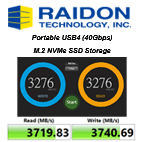In China, DRAM and NAND Revenue Decreased in 2022 to ~$79.7 Billion and ~$58.7 Billion, Respectively
Or -15% and -12% Y/Y
This is a Press Release edited by StorageNewsletter.com on July 20, 2023 at 2:02 pmAfter the worst downturn of the last 15 years ever, the memory market will enter a new growth phase, according a report from Yole Intelligence published on July 18, 2023. China’s memory ambition has not diminished.
- For the full year 2022:
-
- DRAM and NAND revenues decreased to ~$79.7 billion and ~$58.7 billion, respectively.
- NOR flash declined 8% Y/Y to $3.2 billion.
- Global memory revenue is expected to grow from $144 billion in 2022 to a new record-high of over $200 billion by 2025.
- Amid escalating trade-war tension, Chinese companies are still in the game.
- Technology trends: hybrid bonding is key for next-gen 3D NAND and HBM . By 2030, DRAM is poised to become 3D.
Over the past several quarters, the memory markets have faced the most dramatic downturn of the last 15 years. DRAM and NAND prices have fallen 57% and 55%, respectively, since 3Q21. The results for the full year 2022 were as follows: DRAM and NAND revenues decreased to ~$79.7 billion (-15% Y/Y) and ~$58.7 billion (-12% Y/Y), respectively; NOR flash declined 8% Y/Y to $3.2 billion.
Simone Bertolazzi, Ph.D., principal technology and market analyst, memory, said: “The most severe drop started in the final weeks of 2Q22 when a perfect storm of demand-side developments including global conflicts, high inflation, China Covid-19 lockdowns, etc. crashed into the memory markets.“
Production cuts have set up suppliers to reach a market balance by the end of 2023. However, the financial losses incurred so far have been massive, and a recovery time longer than usual will be needed before suppliers increase their investments again. As such, 2024 and 2025 will be marked by undersupply and climbing prices, and revenues are expected to soar: after declining to $42 billion for DRAM (-47% Y/Y) and $37 billion for NAND (-37% Y.Y) in 2023, combined memory revenues are expected to grow to a new record-high of over $200 billion by 2025.
From a Chinese perspective and due to the commercial restrictions set in October 2022 by the U.S. DoC, the outlook for the ramp-up of memory production has become uncertain, and combined wafer capacities for both leading memory companies, YMTC and CXMT, are likely to be limited to ~180kWpm in the next five years.
China has reacted promptly to the restrictions. Chinese memory companies, supported by the Chinese government, re-aligned their strategy.
Since 1Q23, YMTC has considerably intensified its efforts to work with Chinese equipment vendors – among which is Naura Technology – through a not-so-visible project code-named “Wudangshan” and received funding – of the order of $7 billion – from its state-backed investors.
A Bloomberg article published on April 20, 2023, introduced the rumor that CXMT is seeking an IPO at a valuation of more than $14 billion. For a 6-year-old company, this is an astonishing figure, but this should be put in the context of the global memory industry, where memory capital expenditures by international suppliers can easily exceed single-digit billion-dollar amounts over a 2-year period.
“Although the future of China’s memory industry remains uncertain, what is clear is that memory will continue to be a strategic priority for the Chinese semiconductor ecosystem,” asserts Bertolazzi. “China will do everything possible to keep their workhorse memory companies, YMTC and CXMT, alive and running.“














 Subscribe to our free daily newsletter
Subscribe to our free daily newsletter


